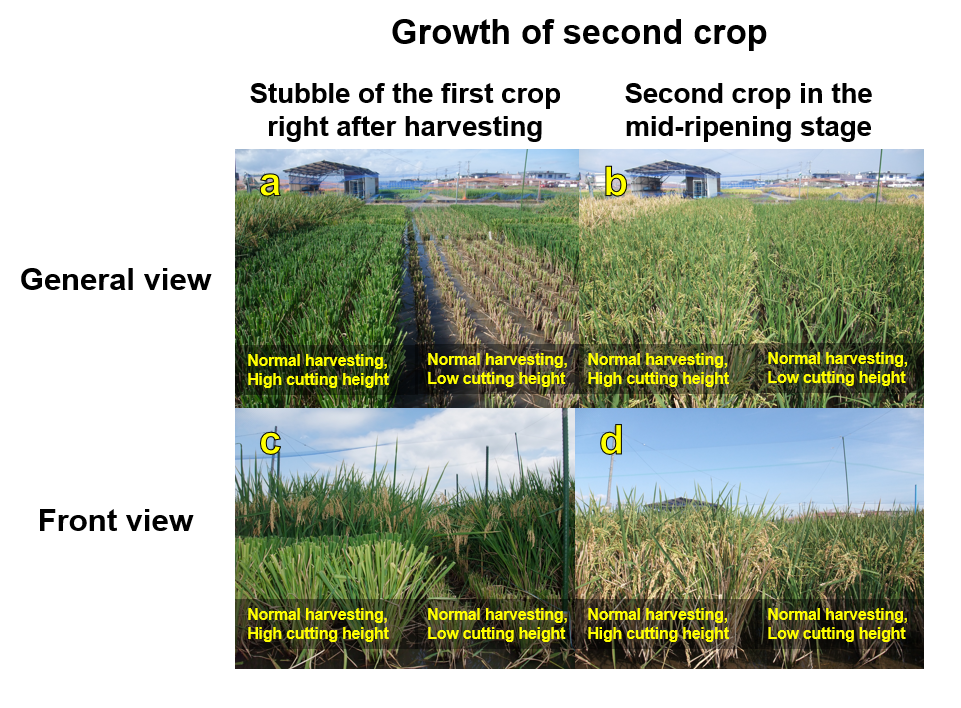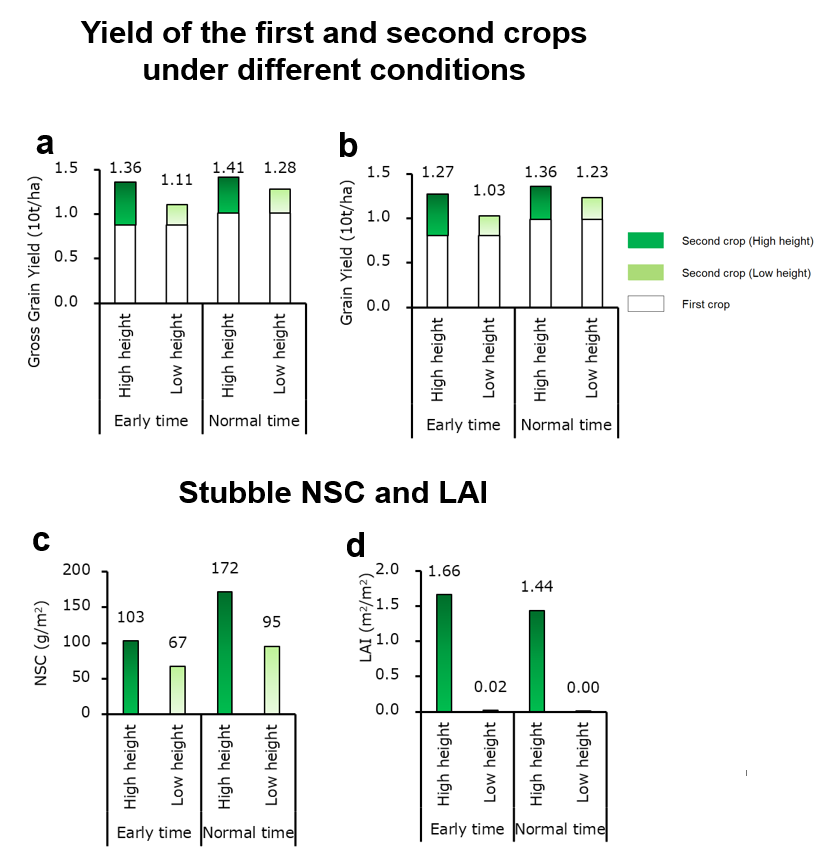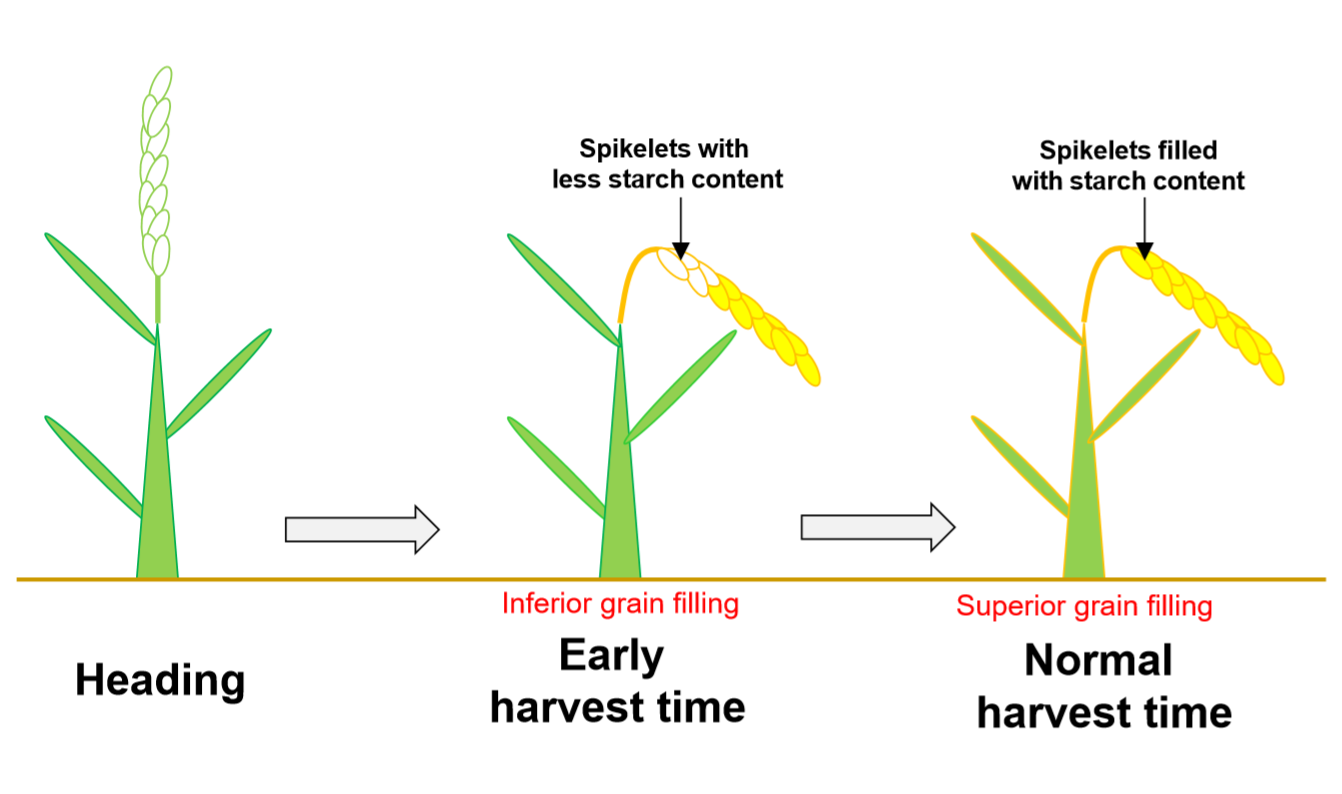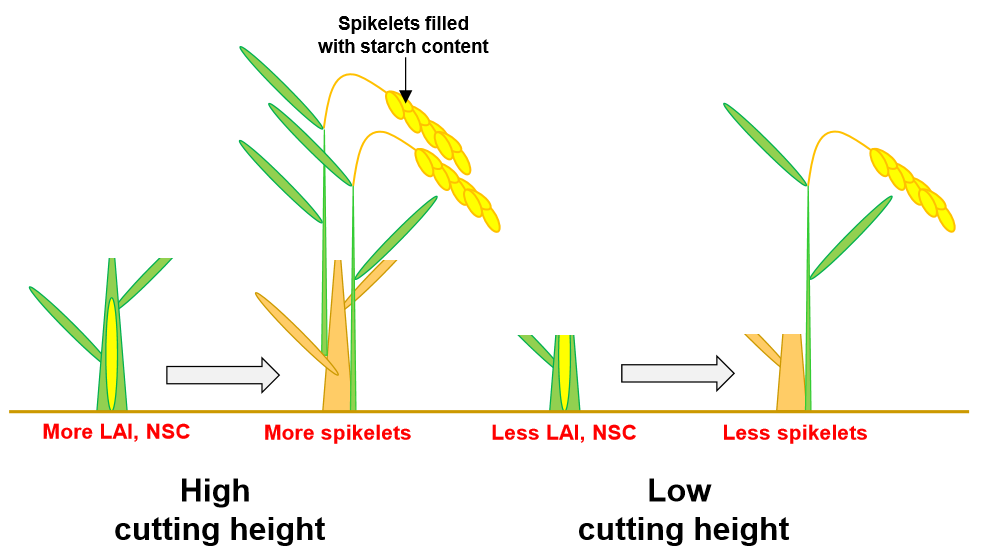Production area with potential for ratooning is predicted to increase as global warming proceeds. The National Agriculture and Food Research Organization (NARO) revealed that controlling harvest time and cutting height of the first crop in ratooning method will drastically increase the yield to approximately 15t/ha at an experimental field basis. The novel production technique is expected to contribute to the stable supply of rice in the era of global food issue as well as to meet the demand for the establishment of the low-cost production system of rice.
Overview
Ratooning is a practice of harvesting second crop from the stubble of the first crop, and rice is one of the perennial plants that can be produced using this method. Since ratooning has the first and second crops, it has advantage of higher total grain yield compared to the conventional single cropping. It requires a longer growing season with warm temperature in spring and autumn. In fact, it is one of the reasons why rice ratooning has rarely been implemented in Japan to the present.
However, Kyusyu area in Japan is an exception with a potential for rice ratooning. The rice-growing season is longer than the rest of the country, with a higher average air temperature in spring and autumn meaning that plants can be transplanted earlier and harvested later. Moreover, current global warming has been raising the average temperature of spring and autumn predicted to result in even longer rice-growing season in the future.
In the recent study, NARO determined the precise condition to realize super high yield in rice ratooning while taking advantage of the warm climate in Kyusyu. The team compared the total grain yield of the first and second crops in different combination of harvest time (early and normal) and cutting height (high and low) of the first crop using the high-yielding line developed to be used in the research. The first crop was transplanted in April and harvested in August, and second crop was harvested in November. Highest total yield of the first and second crops was achieved when the first crop was harvested at normal time after the full grain filling with the higher cutting height above the ground. Total gross grain yield was 14.1t/ha , when total grain yield was 13.6t/ha (as an average of two years). Furthermore, in the year with especially fine weather, the total gross grain yield was the highest as 14.7t/ha (14.4t/ha as a total grain yield), which is threefold the average yield achieved by Japanese farmers.
The novel production technique is expected to contribute to providing stable rice supply to ever increasing world population, as well as the establishment of low-cost production system.
Publications
Nakano, H., Tanaka, R., Wada, H., Okami, M., Nakagomi, K., & Hakata, M. (2020). Breaking rice yield barrier with the ratooning method under changing climatic conditions: A paradigm shift in rice cropping systems in southwestern Japan. Agronomy Journal, DOI:10.1002/agj2.20309.
For Inquiries
Contact: http://www.naro.affrc.go.jp/english/inquiry/index.html
Reference Information

Fig.1 (a and c) Stubble of the first crop right after harvesting at normal timing, and (b and d) second crop in the mid-ripening stage in the experimental field.
(a and c) Left half of the pictures shows the stubbles of the first crop with high cutting height. Right half shows the stubbles of the first crop with low cutting height.
(b and d) Left half of the pictures shows second crop in the mid-ripening stage which grew from the stubbles of the first plant harvested with high cutting height. Right half shows second crop in the mid-ripening stage which grew from the stubbles of the first crop harvested with low cutting height.

Fig.2 (a) Total gross grain yield, (b) grain yield, (c) stubble nonstructural carbohydrate (NSC) concentration, and (d) stubble leaf area index (LAI) of the first and second crops (average of 2017 and 2018).
(a) Total gross grain yield of the first and second crops. Total gross grain yield become higher in plants harvested at the normal time. Plants harvested with higher cutting height produce higher total gross grain yield.
(b) Grain yield of the first and second crops. Grain yield becomes higher in plants harvested at the normal time. Plants harvested with the high cutting height produce higher grain yield.
(c) Stubble nonstructural carbohydrate (NSC) concentration. NSC concentration becomes higher in the plants harvested at the normal time. Plants harvested with the high cutting height has higher NSC concentration.
(d) Stubble leaf area index (LAI). LAI does not differ significantly by the harvest time. LAI increases significantly when harvested with the high cutting height.

Fig.3 The impact of the harvest time of the first crop on the yield of the first crop (image)
The first crop harvested at normal harvest time have superior grain filling than plants harvested at early harvest time, resulting in higher yield.

Fig.4 The impact of the cutting height of the first crop on the yield of second crop (image)
Stubble of plants harvested with low cutting height have less LAI and NSC components left within, leading to less spikelets and less yield. Stubble of plants harvested with high cutting height have more LAI and NSC components within, leading to more spikelets and more yield.




